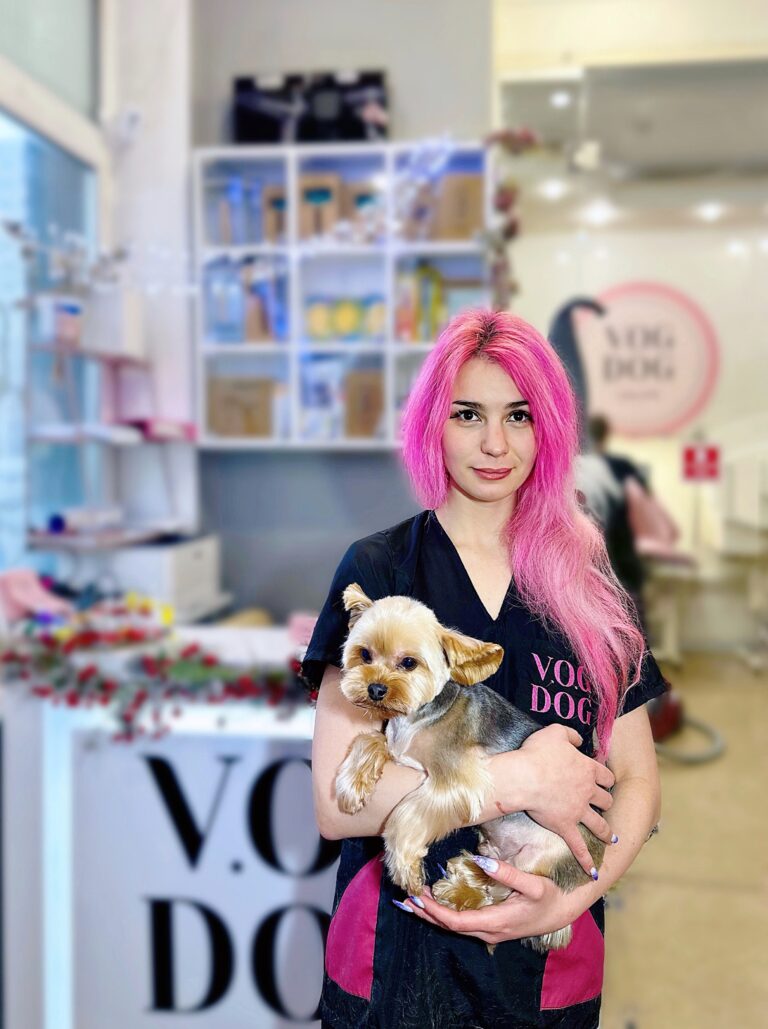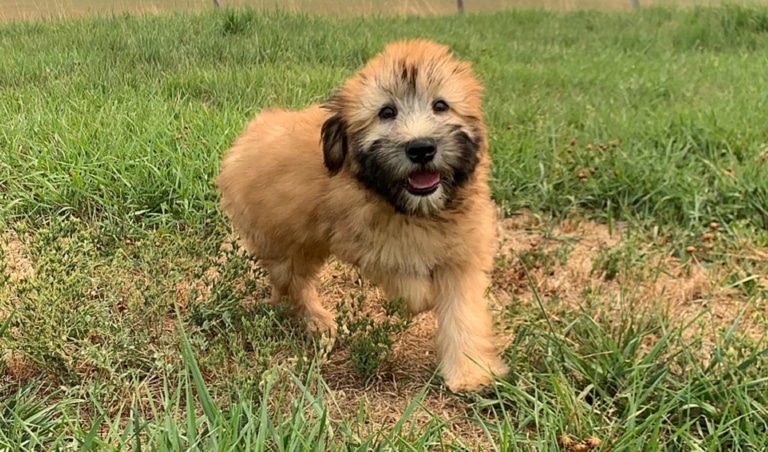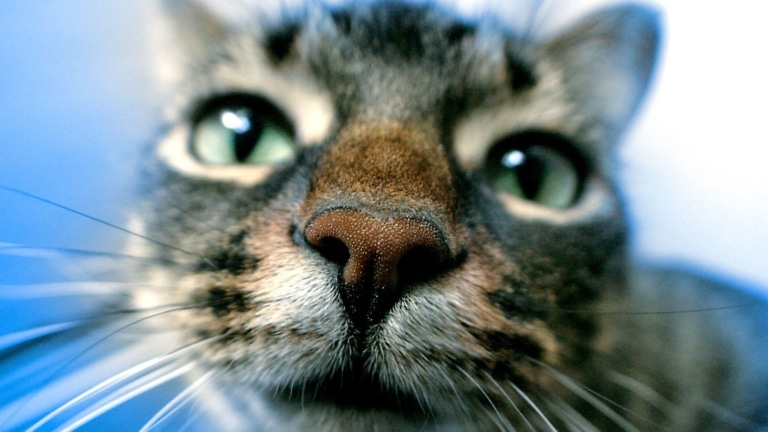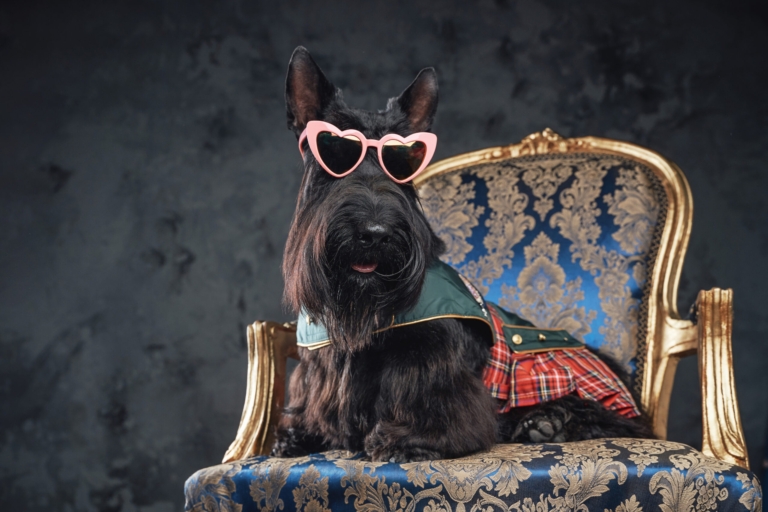Dog Skin and Coat Health
In a world where every day there is something new, our true friends are always there, sharing our joy and despondency. But have you ever thought that one of the secrets to dogs’ energy and happiness is the health of their skin and coat? Yes, these two factors decide whether your Pet is happy.
The skin is the dog’s largest organ and performs a number of vital functions, from protecting internal organs to regulating body temperature. Wool serves as a barrier against external factors such as cold or solar radiation. Therefore, caring for the skin and coat of your Tail is very important.
Luckily, there is a place where understanding your dog’s needs becomes an art – V.O.G DOG Grooming Salon. Here, every treatment, from simple brushing to a full spa treatment, is performed with special attention to detail. Our professionals have a high level of skill and are constantly improving their skills to provide each dog with the best possible care. By placing your dog in the hands of our experts, you can be sure that his skin and coat will get all the care he needs.
In this article, we’ll take a closer look at why regular grooming is a necessity, not a luxury, and how it can improve your pet’s quality of life.
Skin disease in dogs
Why is a dog’s skin important?
A dog’s skin is a covering that protects against external factors; it is a complex organ that has several functions: it regulates body temperature, protects internal organs, plays a role in the immune system, and is an indicator of overall health.
What are the symptoms of skin diseases in dogs?
Symptoms of skin diseases in dogs can vary and include redness, itching, flaking, hair loss, swelling, sores, and changes in skin color and texture. It’s important to note that these symptoms can be signs of a variety of conditions, from allergic reactions to more serious illnesses such as hormonal imbalances or infections.
Why do dogs have skin problems?
The main causes of skin problems in dogs include genetic predisposition, poor diet, allergies, parasites (fleas, ticks), hormonal imbalances, infectious diseases and even stress. It is important to understand that a dog’s skin has its own unique characteristics. It is thinner and has fewer layers than humans, making it more vulnerable to irritants and injury. It should also be noted that dogs’ skin varies depending on the breed, which can affect the types and frequency of skin problems.
In this context, the role of regular grooming and professional care provided by V.O.G DOG salons becomes even more important. Not only do we help keep your coat and skin hygienic and healthy, but we also ensure early detection and prevention of potential problems, keeping your Ponytail clean and comfortable.
Constant itching in dogs
Itching due to insects and fleas
Dog itching, caused by insects and fleas, is one of the most common problems faced by pet owners. Fleas can cause an allergic reaction to their bites, resulting in persistent itching, redness of the skin, and sometimes eczema. The fight against fleas includes several stages: from treating the animal itself to treating its environment.
The modern market offers a wide range of products against fleas and other parasites: these can be drops on the withers, sprays, collars, tablets or even injections. Most of these products contain insecticides such as fipronil, imidacloprid or permethrin, which are effective in killing fleas and their larvae. The choice of a specific product depends on the characteristics of the dog (age, weight, health) and the recommendations of a specialist.
Allergies in dogs
Allergies in dogs are an exaggerated reaction of the immune system to normally harmless substances in their environment. These can be food allergens, household allergens (dust, mold), as well as insect bites. Allergy symptoms include itching, red skin, hair loss, sneezing, and sometimes even gastrointestinal problems.
Causes of allergies and their diagnosis. How to test your dog for allergic reactions?
Allergies can be caused by many factors and their diagnosis often requires a comprehensive approach. These may include blood tests, skin tests, or special elimination diets to identify allergens.
To detect allergic reactions, your veterinarian may suggest skin testing, where a small amount of potential allergens is applied to the dog’s skin and the reaction is observed. Blood tests that measure the level of antibodies to certain allergens in the blood may also be used.
Diagnostic methods and recommendations for groomers
Our professional groomers at V.O.G DOG salons play an important role in identifying signs of allergies or skin problems in your dog. They may notice unusual changes in the condition of the skin or coat and recommend visiting a veterinarian for a more detailed examination. In addition, regular grooming helps reduce the number of allergens on the animal’s skin and fur.
Dandruff and dry skin
Symptoms and causes of dandruff
Loupe in dogs is a condition in which there is excessive flaking of dead skin cells, often accompanied by dryness and itching. Symptoms include white or gray scales on the skin and coat, redness and irritation of the skin, and sometimes a foul odor. Dandruff can be caused by a variety of factors, including dry air, poor diet, allergies, hormonal imbalances, infections, or improper grooming.
How to solve the problem with dandruff?
To treat dandruff and dry skin, it is important to use specially formulated cosmetics. Ideal shampoos and conditioners for dogs with this problem should contain moisturizing ingredients such as aloe vera or oatmeal, which soothe the skin and reduce flaking. Supplements with omega-3 and omega-6 fatty acids are also helpful, helping to support healthy skin from the inside out. Avoid harsh chemical ingredients as they worsen skin condition.
Care tips and advice
Regular bathing: use specialized shampoos for magnifying glass. When bathing, gently massage your skin to help remove dead skin cells.
Balanced diet: Provide your dog with a diet rich in fatty acids and vitamins that support healthy skin.
Minimize Stress: Stress can contribute to skin problems, so it’s important to create a calm and comfortable environment for your ponytail.
Regular visits to the veterinarian: Regular examinations will help identify and treat skin problems in the early stages.
Habitat hygiene: Regularly clean your dog’s bed and areas where he likes to be to avoid the accumulation of dust and allergens.
Please note that for severe or long-term skin problems, it is important to seek the advice of a veterinarian. He will recommend specialized treatments or dietary supplements that will help eliminate the problem.
Hair loss in dogs
Symptoms and causes of hair loss
Hair loss in dogs is not always just seasonal shedding or a natural process. This may be a sign of health problems. Symptoms of abnormal hair loss include hairless patches, thin coats, and changes in coat texture or color. Possible causes include hormonal imbalances such as thyroid problems, allergies, skin infections, stress, parasites, poor diet or genetic factors.
Types of hair loss and possible causes
Hair loss in dogs can come in a variety of forms:
Diffuse hair loss: uniform hair loss over the entire body, often associated with poor diet or stress.
Focal hair loss: Localized bald patches that may indicate skin infections, parasite bites, or allergic reactions.
Seasonal shedding: A natural process that usually occurs in spring and fall.
Hair loss protection
Balanced diet: A quality diet rich in protein, fatty acids, vitamins and minerals is important for a healthy coat.
Regular Grooming: Regular brushing helps distribute the skin’s natural oils, promoting healthy coat growth.
Pest Control: Regular use of pest control products helps avoid infections that can cause hair loss.
Stress management: Providing a calm environment and regular exercise to reduce stress.
Prevention and treatment methods for hair loss
If there is abnormal hair loss, it is important to consult a veterinarian to determine the cause and appropriate treatment.
Omega-3 and omega-6 fatty acid supplements support healthy skin and coat.
Treating an underlying condition, such as thyroid problems or allergies, can prevent hair loss.
Using natural shampoos and conditioners with natural moisturizing ingredients to reduce dry skin and improve coat condition.
These recommendations are aimed at solving existing skin and coat problems, as well as preventing future problems, ensuring your pet’s healthy, shiny coat.
Services and expertise of groomers in the V.O.G DOG salon
At the V.O.G DOG salon, the masters pay special attention to the uniqueness of each Ponytail and pay special attention to the choice of cosmetics. We use only premium cosmetics, which are not only suitable for different skin and coat types, but also take into account the individual characteristics of each dog. Our range also includes anti-allergy products to provide the best care even for dogs with sensitive skin.
Professional grooming at V.O.G DOG is a comprehensive approach to the health and happiness of your pet. Our experienced team provides high-quality grooming and can identify early signs of skin problems or other diseases, allowing you to seek veterinary help in a timely manner.
We invite you to visit our V.O.G DOG salons, where your charming Tails will receive excellent care and a feeling of love and care. To book a grooming session, please click the link button below this article.









